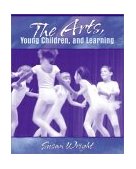Build a local arts
advisory committee:
Build a local arts advisory
committee to develop community awareness about the importance of arts
education. Include artists, arts groups, service organizations,
educators, private sector supporters, manufacturers or retailers of
arts-related products. Work with arts volunteers, audience members,
and local arts councils. In every community , there are many people
who support and benefit from the arts.
Build your case:
Know who is served by
your Board of Education! Student demographics, socio-economic levels,
academic, parent education levels.
Know the Board's financial
resources and how they are used.
Know the local revenue-raising
capacity of the community.
Have accurate figures on the
number/percentage of students served by every level of the arts
program at every school in your area.
Identify the number/percentages of
students who will be denied art education instruction.
Identify the results of proposed
cuts on the future of an arts program. (i.e. Cutting elementary music
results in a 60% loss of students at the middle and high school
levels.)
Identify in writing the cost of
properly storing instruments, equipment, and music while the program
is in "hiatus".
Identify in writing the costs of
repairing, replacing instruments, equipment, and music when the
program is re-instated.
Identify how the music program
saves taxpayer dollars and how the music program accomplishes this
more effectively than any other program? (Hint: If it doesn't save
money, you need to reorganize.)
The best bargaining position
occurs when arts teachers have the same or greater number of students
as teachers of other subjects. (Hint: If arts teachers have less, use
this information to your advantage and demonstrate how changes in the
delivery of the arts program would serve more students and be cost
effective.)
Understand the budget process:
Understand budget
terminology.
Understand how administrators and
the school board manipulate the budget process.
Cuts in the arts program may
create the illusion of saving money, but do they?
Review all line items in the
budget and propose plausible alternatives to cutting
music.
Lobby administrators/board members
who are sympathetic.
Identify the real issues
underlying the proposed budget cuts.
Meet your elected representatives:
When you visit or write your
legislators, make sure to have answers to the following questions at
your fingertips:
Why is arts education
important to you?
What impact does it have for
you/your community?
What would happen if
programs/funds/services were eliminated?
What are you asking your
legislators to do?
State your case to local
media:
Inform media about the importance
of the arts to the local economy. Set up a meeting with the editorial
board of your local newspaper. This can be done very effectively by
joining fornces with other local arts organizations to make a joint
presentation. Write letters to newspaper and magazine editors that
support arts education funding and challenge stories and editorials
that support cuts to the arts education programs.
Most important! Keep the message focused on the
kids!
Call the local newspaper, cable
channel, TV stations, etc. Prepare a headline! ("15,000 elementary
students in Newtown will lose arts programming.")
Recruit parents to attend board
meetings. (Make sure each of them wears a badge or black ribbon that
identifies them as arts education parents.)
Select well-spoken and
level-headed parents to deliver the message.
Invite elected representatitives
and other key community members to events:
Invite politicians and their
senior staff to your events, programs or facility. When MPPs and MPs
are in their ridings, it is a good time to make sure that they
experience first hand your accomplishments and successful programs.
Convey to them how much government support of arts education means to
you.
Invite key community members to
your events or facility. Highlight your special services to the
community.
Acknowledge the importance of
public and private support:
Acknowledge the importance of
support received from the public funders. Point out, where possible,
how this upport helped to generate private funding.
Acknowledge the key role played by
individual donors and corporate and small business supporters who
contribute financially, provide in-kind donations, and volunteer
their time to arts education programming.
 The Arts, Young
Children and Learning
The Arts, Young
Children and Learning
This book provides an overview of
current philosophies, theories and practices in early childhood arts
education, with many engaging examples of how children learn and how
adults can enhance this learning. The Arts, Young Children, and
Learning presents how children learn through the arts and how adults
play an important role in assisting this learning.